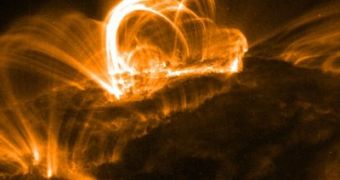Every 11 years, the Sun experiences a period of massive solar storms, when violent solar flares and vast explosions known as Coronal Mass Ejections (CME) have the strongest manifestations of the entire cycle.
When the ejections reach the Earth as an ICME (Interplanetary CME), they may disrupt the Earth's magnetosphere, compressing it on the dayside and extending the nightside tail. When the magnetosphere reconnects on the nightside, it creates trillions of watts of power which is directed back towards the Earth's upper atmosphere.
This process can cause particularly strong aurora also known as the Northern Lights (in the Northern Hemisphere) and the Southern Lights (in the Southern Hemisphere). CME events, along with solar flares, can disrupt radio transmissions, cause power outages (blackouts), and cause damage to satellites, GPSs and electrical transmission lines.
The fact that the solar storms cycle is one year late has troubled some astronomers, and they are wondering if this means that a weak or strong period of solar storms lays ahead, but neither predicts a record-breaker.
They measure the intensity of the solar cycle in maximum number of sunspots (dark blotches on the sun that mark areas of heightened magnetic activity) and the more sunspots there are, the more likely it is that major solar storms will occur.
The effects on human society have to do mostly with the technological advance than to biological threats, although health hazards are not inexistent.
A solar eruption in December disrupted the Global Positioning System, creating radio bursts that traveled to Earth, covering a broad frequency range. In addition to the GPS system, the December solar flare affected satellites and induced unexpected currents in the electrical grid.
Many government and private institutions have demanded a forecast of the Sun's activity during the storm cycle to help them prevent damage to their infrastructures and business activities, for more than a year, so the NOAA Space Environment Center led the prediction panel and issued the forecast at its annual Space Weather Workshop in Boulder, Colorado.

 14 DAY TRIAL //
14 DAY TRIAL //